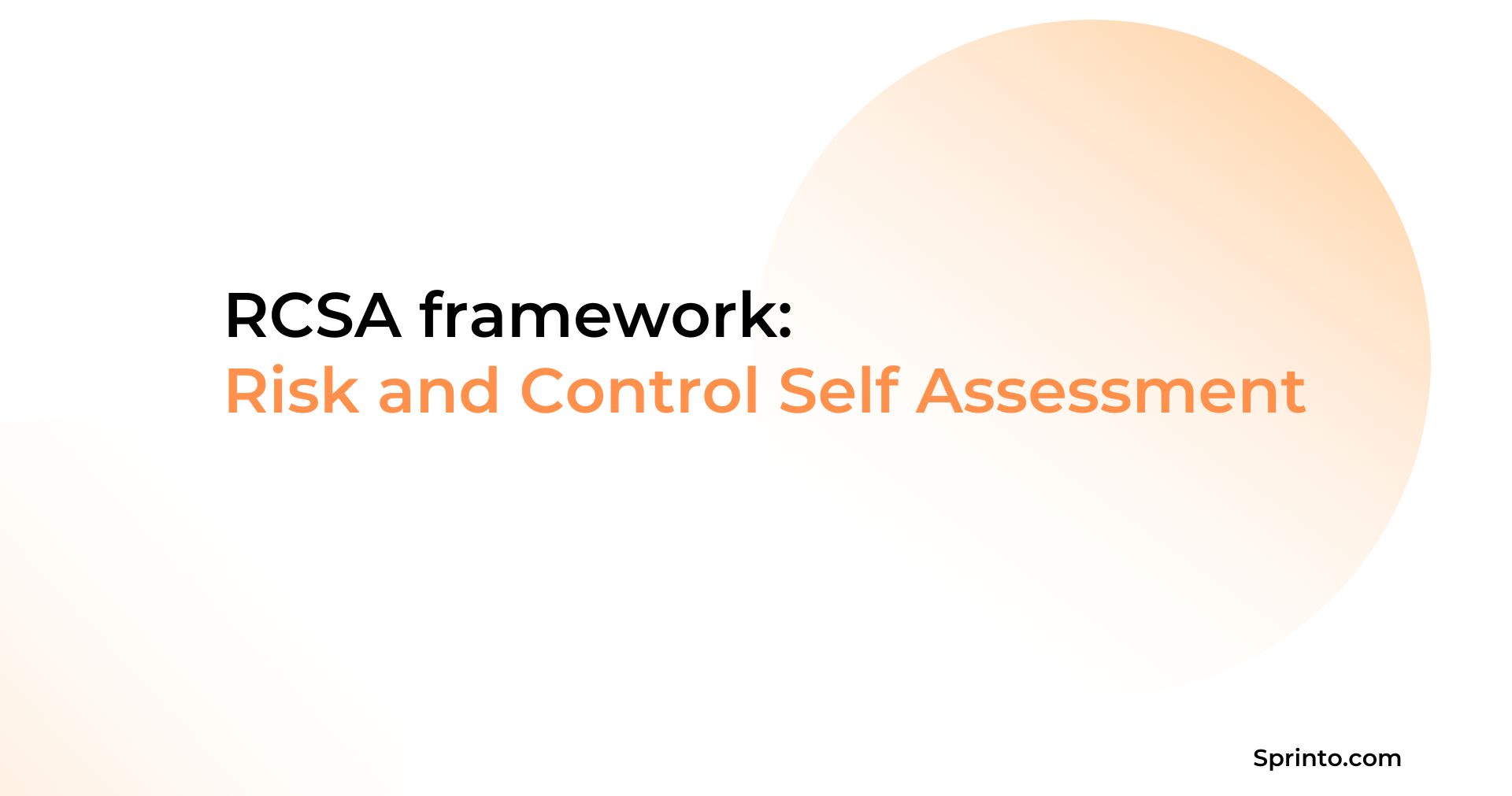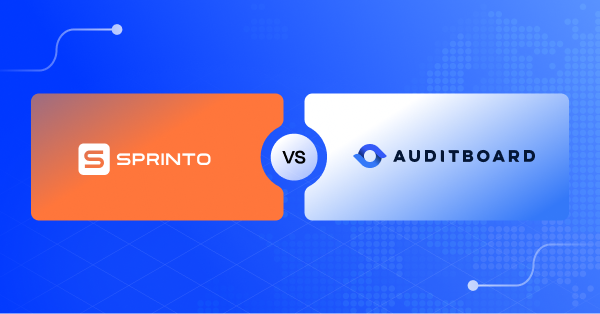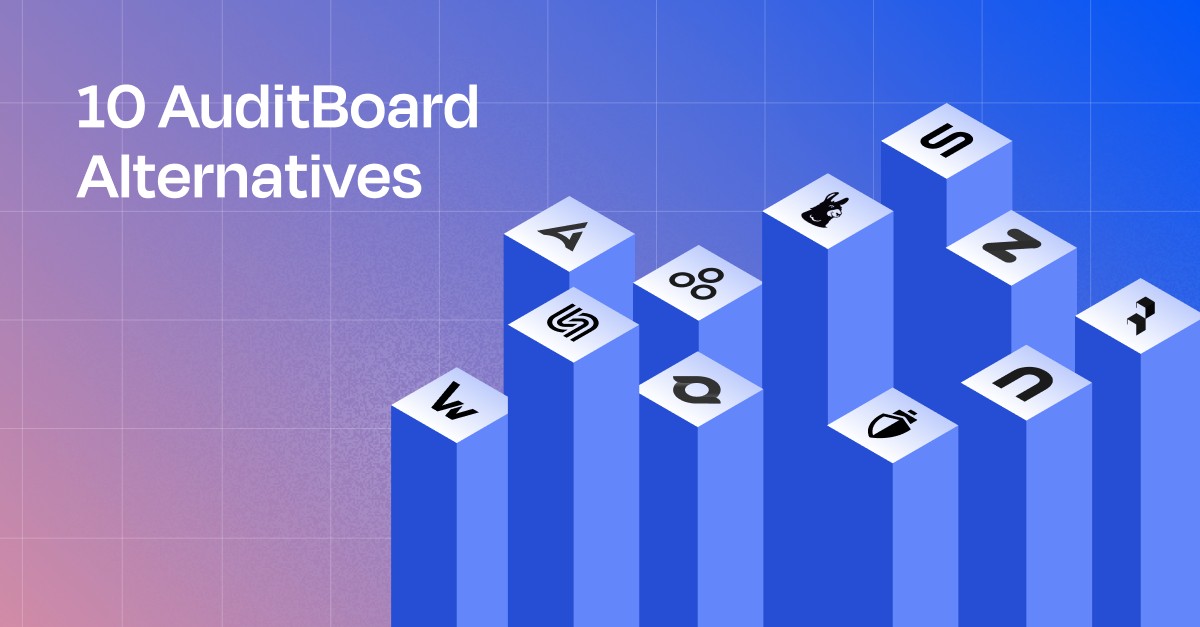RCSA Framework: Secure Posture, Without the Stress
Virgil
Aug 22, 2024
As security professionals, we all understand the sinking feeling that comes with a potential infosec or operational risk event. Reports substantiate this anxiety too— as per a report by Mckinsey businesses across the globe lost over 600 billion dollars as a result of 65,000 risk events between 2017 and 2021.
But what keeps you up at night isn’t just the possibility of a risk materializing, it’s not knowing which specific risks are most critical for your organization and how well your controls fare against them.
RCSA is the antidote to that risk-induced worry.
RCSA helps you approach risks confidently, prioritize better, evaluate the effectiveness of your controls, and reveal what needs to be done to bolster your resilience.
This brings us to the core objective of RCSA—navigating risk management in a way that allows businesses to be resilient by default, 24/7, 365 days a year. Take it from an industry veteran, Girish Redekar.
“Risk is something that is common sense and we do it every day. It is also core to frameworks like ISO. If you find a good system that helps you translate that risk into the way your business runs, then you can do well as a risk function.“
Girish Redekar, Co-Founder at Sprinto
TL;DR
| Risks are infinite, but your resources are not. Building resilience is all about right-sizing your risks and efforts. That’s what RCSA helps you do. |
| You can’t improve what you can’t measure. Evaluating risk impacts and the effectiveness of mitigating controls to reduce residual risk is the core objective of risk and control self-assessment. |
| Traditional, point-in-time approaches to RCSA don’t cut it anymore. You need technology to continuously monitor control performance against the evolving risk landscape and help you right size risks so you can focus on the risks that matter the most, and never take more liability than you should. |
What is the RCSA framework?
Risk and control self-assessment (RCSA) is a framework for businesses to identify the risks inherited from operations while assessing how well existing controls or measures hold against them. It involves the evaluation of risks based on their operational impact, financial impact, and likelihood of occurrence. This ensures a clear status of the security posture and reveals the roadmap to bolster security.
Once you have quantified the risks by scoring them on impact and likelihood of occurrence, you would need to calculate the residual risk to gauge the effectiveness of the controls implemented by using these formulas:
- Risk score = Risk impact * risk likelihood.
- Residual risk = Inherent risk – Impact of risk controls
Importance of RCSA Framework (Flying Blind vs. Taking Control)
RCSA framework is important as it lays the foundation for navigating operational risks blindfolded and building a strategic shield that provides reasonable assurance that business objectives will not be hindered.
Here’s a deep dive into why businesses need RCSA:
- Reveals blind spots: Businesses can’t manage risks they can’t see. The RCSA framework pushes businesses to scrutinize their processes to identify the risks they wouldn’t otherwise anticipate.
- Informed decision making: Speculating risks leads to businesses underhedging or overhedging risks, leading to disproportionate mitigation and treatment efforts compared to their true impact. Moreover, new decisions introduce new threats. RCSA helps match risk management rigor with risk impact while accommodating new risks as they grow, helping senior management make risk-aware decisions.
- Keeping up with the regulatory landscape: Many industries have regulations requiring risk management practices. RCSA helps businesses demonstrate compliance with these regulations and identify areas where their controls might need strengthening.
- Drives better business decisions: When you know what operational risks you can take, accept, or treat based on your risk appetite, it becomes easier to drive business decisions that don’t weaken the security posture.
Why legacy RCSA doesn’t cut it anymore
A major pitfall of legacy RCSA frameworks is that they operate based on a static snapshot of business processes, giving rise to problems like:
- Reactive risk management: Risks are dynamic, and so should be your assessment. Traditional approaches based on static snapshots of risk posture can’t accommodate risks introduced by dynamic operations and new business decisions, leaving organizations vulnerable.
- Checkbox mindset: RCSA is often seen as a checkbox activity. This is typical of scrambling teams during audit season. Legacy tools support this approach and this can severely impact RCSA objectives.
- Chaotic processes: Periodic risk assessments can leave you rushing through control tests, patching tasks, and scrambling to identify and score operational risks. And sometimes, all you can do is hope no surprises spring up. But this approach impedes your teams from working on things that truly matter, building robust infrastructure, and processes.
Remove the guesswork. Bring in precision
Modern GRC tools like Sprinto keep risk benchmarks and continuous monitoring of controls at the heart of risk management. So instead of speculating about potential risks and taking disproportionate mitigating measures, you prioritize risks with empirical rigor, right-size your strategy, and always stay on top of your security posture. Here’s how:
- Pinpoint and assess risks unique to your business: With modern RCSA approaches, you can scope out risks and score them for their impact and likelihood of occurrence using industry benchmarks.
- Automate testing: Sporadic risk assessments and control testing leave your business vulnerable to threats. continuously monitor controls with Sprinto, and get alerted before a failing control leads to issues.
- Cut across siloes: Integrate all your systems—people, cloud, processes. A tool like Sprinto ensures your business silos don’t lead to a weak security posture. Continuously test controls across your organization. Cull chaos by standardized risk taxonomies and management from one place.
- Manage all your 3rd party risks in one place: Conduct thorough, regular, vendor risk assessments with Sprinto’s end-to-end risk management. Automate new vendor discovery and manage risk throughout the vendor lifecycle with greater control and more confidence.
Manage risks with precision with Sprinto
How you can conduct RCSA to build true risk resilience
Traditional approaches to managing risks don’t build true risk resilience as they are rife with guesswork, leading to overhedging or underhedging risks. To build true risk resilience you have to asses risk impact and control impact with empirical rigor and prioritize accordingly.
Here are the steps to risk and control self-assessment to build true resilience for your business:
Step 1 – Identify inherent risks
Inherent risks come naturally along with business operations. Identify risks emerging from each business unit. For example, disruptions in the supply chain, data theft, sabotage by a disgruntled employee, unauthorized access to premises or data, and more. Once you’re done with risk identification, you can move to the next step—assessing impact.
Step 2 – Assess and document these risks
Once you have identified the risks unique to your business, you need to apply empirical rigor to score risks. You can score risks for their impact and likelihood of occurrence. Inherent risk = Risk impact * likelihood of occurrence. Add these risk ratings to your risk register to build a comprehensive understanding of your risk profile.
Step 3 – Calculate the monetary impact of risks
This process includes multiplying the probability of each risk by its potential financial impact to determine the Expected Monetary Value (EMV). For instance, if a risk has a 10% chance of occurring and could result in a $50,000 loss, its financial impact becomes $5,000. As a last step, actively involve senior management in the process, document the results, and get their approval.
Step 4 – Evaluate the effectiveness of controls and identify control gaps
Once you have evaluated your risks, you need to measure how effective your existing controls are at mitigating them. Test controls by examining the logs and documentation, sample testing the controls, or using Computer-aided Automatic Testing (CAAT) to analyze large amounts of data and edge cases.
Step 5 – Update controls
Once you have analyzed the control gaps, you need to set and document adequate measures to plug them. This can be done by updating the existing controls or adding new ones. For example, if you identify vendor risks as a big threat to your business continuity, you may add controls in place to mitigate them.
Step 6 – Manage residual risk
Residual risk is the impact of the risk left after the mitigation controls have been applied. Once the right controls are established, calculate the inherent risk based on the effectiveness of mitigation measures. Residual risk = Inherent risk – impact of controls. Based on that, choose to:
- Avoid the risk (completely eliminate or bypass the risk )
- Mitigate the risk (lower the probability or impact of the risk. This usually involves documenting a corrective action)
- Transfer the risk (delegate or shift the risk to a third party)
- Accept the risk (recognize the risk and opt not to eliminate, transfer, or mitigate it)
Document mitigation action plans once you have assessed risks and decide which ones you can avoid, mitigate, transfer, or accept.
Step 7 – Assign risk owners and federate accountability.
Compliance processes demand that stakeholders and people do their part to uphold the requirements. A culture of compliance needs to be embedded right in the heart of business operations. Thus, as a part of the process, federate accountability across various action items, departments, and roles within the organization to promote risk ownership, transparency, and efficiency in adhering to regulatory requirements. Here’s how it can be done:
☑ Identify key stakeholders
☑ Define responsibilities clearly
☑ Federate accountability
Step – 8 Continuously monitor your risk posture
Continuously track, evaluate, and document risks, noting any changes in their status or the emergence of new risks. Regularly monitor the effectiveness of your control environment against them to detect and address gaps early. Update corrective actions and controls for maximum effectiveness against identified risks.
Secure more, worry less with Sprinto
For decades, risk assessment has been an activity rife with guesswork and decisions disconnected from reality. Legacy RCSA frameworks often hold back businesses from growth, and emerging threats leave them vulnerable to threats lurking in blind spots.
Not anymore. Powered by automation, risk industry benchmarks, and an inbuilt library of risks, Sprinto enables you to broach your risks with precision, assess threats with empirical rigor, and prioritize better, so you right-size mitigating controls and rationalize management.
Sprinto also makes it easy to continuously test control performance in real time, refine your risk management systems, and take on new risks as they emerge. Tiered, automated alerts flag failing controls and trigger remediation workflows, ensuring you always stop risks in their tracks.
Consequently, risk management becomes a more precise, thoughtful effort, instead of a nerve-wracking gamble.
Assess and manage risks with precision. See Sprinto in action.
FAQ:
1. What does RCSA mean in banking?
In banking, RCSA stands for Risk Control Self-Assessment. It is a process used by financial institutions to identify, assess, manage, and mitigate risks associated with their operations. For the financial industry, RCSA is also a crucial step for regulatory compliance. It helps banking businesses stay resilient to monetary losses due to cyber-attacks and fraud.
2. What are the 5 components of the risk management framework?
5 components of risk management include identification of potential risks, evaluating risks for their impact, getting buy-in from relevant stakeholders, establishing measures with the help of risk experts, testing the effectiveness of controls, and documenting a risk treatment plan.
3. What do you write in risk and control self-assessment?
In a Risk and Control Self-Assessment (RCSA), you document potential risks, evaluate control gaps, and outline key controls and action plans to address any weaknesses. It’s a process to ensure ongoing risk management and control effectiveness within the organization.
4. Who is responsible for RCSA in an organization?
The responsibility for RCSA usually lies with the operational risk management or compliance departments, in collaboration with individual department managers and team leaders. They work together to ensure all areas, including security, are thoroughly assessed and managed. They work closely with external auditors to validate security posture and comply with a wide range of security standards.
5. How does Sprinto help with RCSA?
Effective risk and control self-assessments demand risk judgments based on industry risk benchmarks, risk ratings, and tolerance levels. It further needs evaluation of control performance and continuous monitoring of controls as business takes on new risks. Sprinto helps you assess risks with empirical rigor with out-of-the-box risk benchmarks and impact scores, lets you add custom risks, and continuously tests controls for optimal performance. It ensures all critical processes are adhered to, and shifts your approach to risk management from reactive to proactive.
Why do businesses need the RCSA framework?
Without a structured approach like Risk and Control Self-Assessment (RCSA), companies operate in the dark. Unidentified threats can lurk beneath the surface, potentially derailing operations, jeopardizing finances, and even damaging hard-earned reputations. RCSA steps in as a proactive shield, empowering businesses to systematically identify and assess these potential pitfalls. It sheds light on the risk landscape, allowing for informed decision-making, efficient resource allocation, and ultimately, a smoother path to achieving business objectives.


Use Sprinto to centralize security compliance management – so nothing
gets in the way of your moving up and winning big.





















